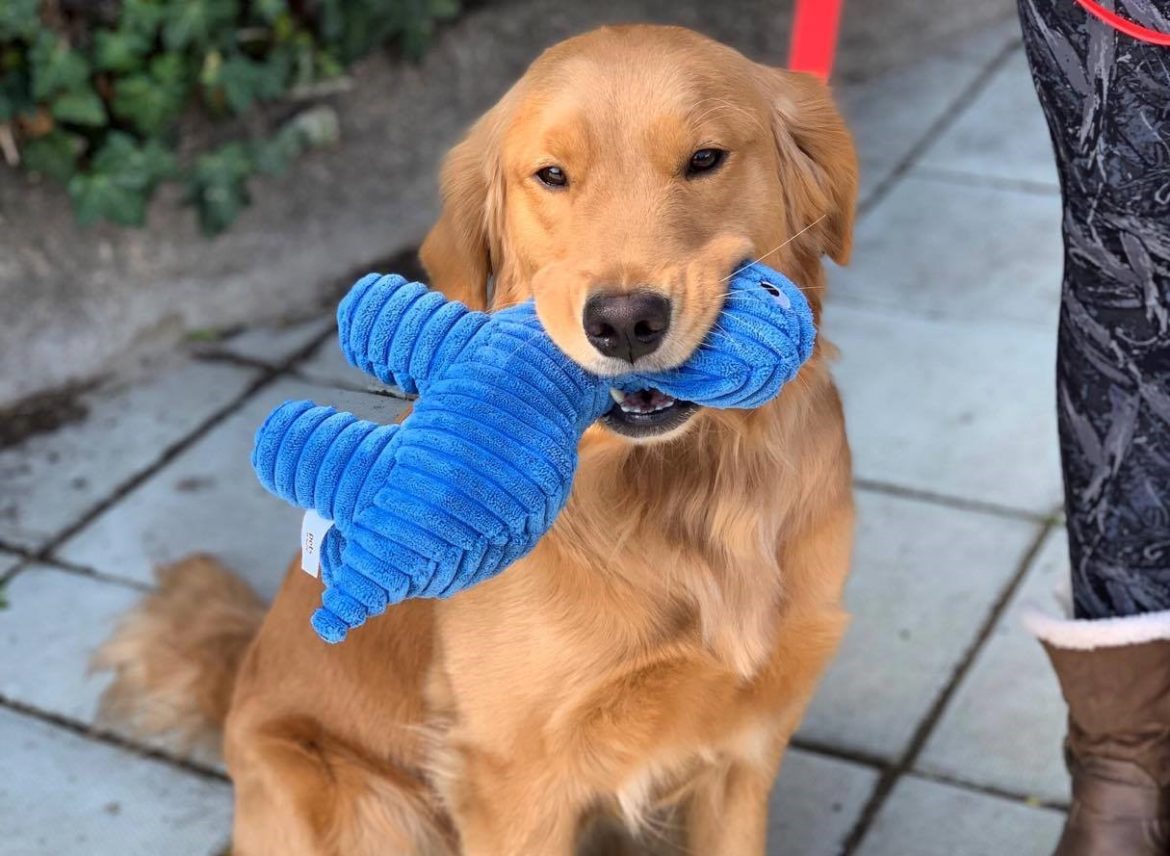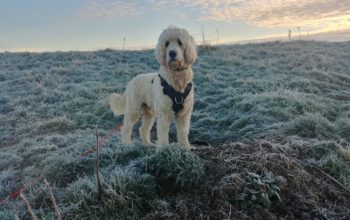Training Tips: The Covid-19 Outbreak
IT IS OBVIOUSLY A VERY CHALLENGING TIME AT THE MOMENT AMIDST THE COVID-19 PANDEMIC, WITH A LOT OF UPHEAVAL AND CHANGE FOR MOST OF US. UPHEAVAL CAN BE DIFFICULT FOR DOGS TOO, BUT WE CAN STILL DO THE BEST WE CAN FOR THEM IN A BAD SITUATION, ESPECIALLY IF YOU ARE STUCK AT HOME.
Author: Dory Adelie
Most of us have been instructed to practise social distancing (minimising contact with others), and an increasing number have been instructed to self-isolate, so we thought we would share some tips on how to a) keep your dog stimulated even if they’re going out less or you’re not able to take them for whatever reason, b) maintain your training with them and c) keep them calm amidst the upheaval.
Keep Them Stimulated
First off – if you are able to and it is safe to do so, continue walking your dog, but maybe consider going at a quieter time, or venturing to a wider space to walk rather than an area with narrow pathways. If you can, give people a wider berth; your dogs won’t suffer from less interaction with other dogs or people, in fact it might be good for them. Even on lockdown, you are allowed to go out for essentials like exercise, so just be sensible. If you are experiencing symptoms, follow your relevant up to date government guidelines. If you are unwell and/or very high risk, consider getting someone else to walk your dog.
Most dogs will not suffer greatly if they miss a walk or two. Sure, they might be more full of beans, or be a bit more difficult, but there is plenty you can do to keep them entertained at home if you can’t walk your dog. Obviously if you have a garden, let them play out there (making sure it is safe and secure). Whether you’re in your garden or a local park or field, you can make the most of your walks by practising your usual commands outside in a different environment, and really letting them sniff and engage with the outdoors environment as well.
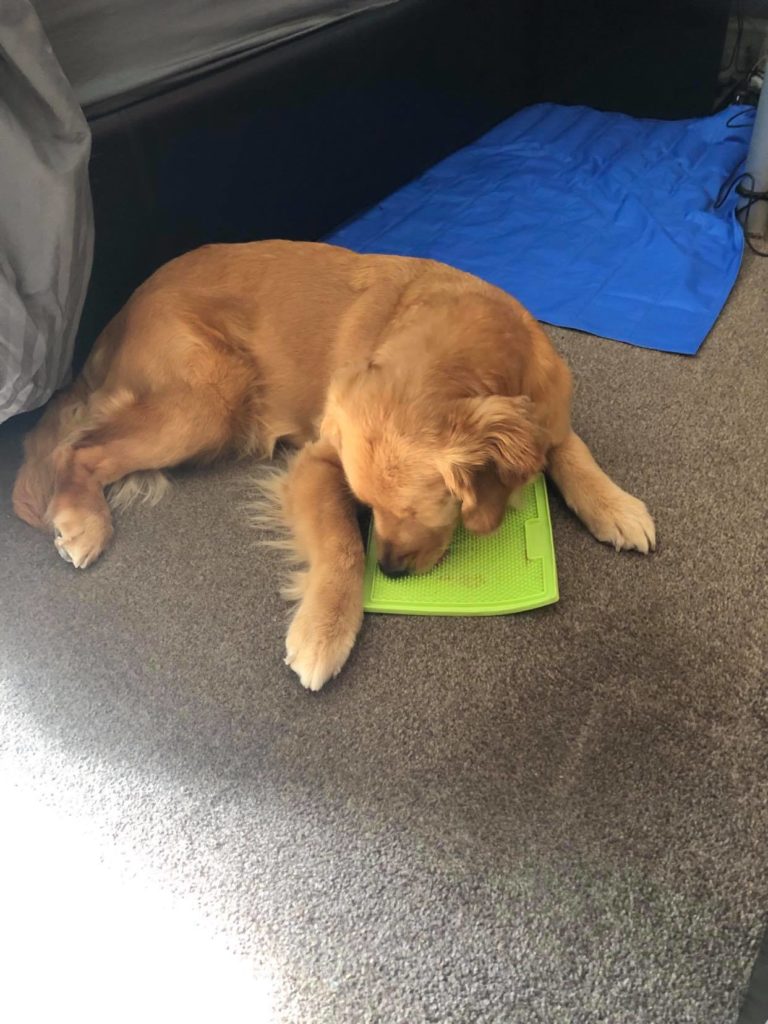
Additional ideas:
- Hide/scatter their food outside to engage their nose and brain
- Play fetch, chase, hide & seek or other games outside or inside with them – don’t underestimate the mental stimulation involved in games like these and it increases bonding too
- Make use of any puzzles, agility equipment, Kongs, lickimats, snuffle-mats, bones, toys etc. that you have (supervise the use of these)
- Make your own puzzles/enrichment activities using empty bottles or toilet rolls (IF YOU HAVE ANY!!!), treats/kibble and any safe types of stuffing (supervise these as well) – if you’re not sure, there are lots of Facebook groups for DIY enrichment activities for dogs
- Training has great value and can be really stimulating (and tiring) for dogs both mentally and physically
Train With Them
There are so many ways you can continue training with your dog at home, even if you are self-isolating. We have touched on some of them by chance in our other articles about when you are short on time and energy, but we wanted to include some other options as well:
- Teach new tricks, tasks and activities to your dog, even if you don’t particularly need them and/or may never use them again – learning something new engages their brain and strengthens your bond.
- Get your dog to help you with daily activities even if they are not an assistance dog/you don’t need it e.g. picking up items off the floor, laundry, retrieving items, carrying items, closing/opening doors, tidying up, getting the post from the letter box
- If your dog is an assistance dog, use this time to teach new (and/or practise existing) tasks, including responses
- Work on positional commands e.g. “place”/”bed”, front paws up vs full jump up, sit/down/stand stays, backing up
- Work on proofing existing commands and tasks by increasing difficulty, distraction, duration and/or distance
- Chain existing commands together in various ways, and do sessions of drills of their existing repertoire of tricks in different orders to challenge their listening skills and keep them on their toes (so to speak!)
- If you usually use verbal commands paired with hand signals, try using exclusively hand signals or exclusively verbal commands. Or to make it harder, try giving verbal commands when you’re not looking at your dog (you can stand with your back to them and use a mirror over your shoulder so that you can mark and reward on time)
- Practise indoor on-leash and off-leash heeling around the house and navigating obstacles
- Continue desensitising them to stimuli such as being brushed, new sounds, different textures etc.
Keep Them Calm
While it is important to make sure your dog is sufficiently exercised and stimulated, it is also essential to give them downtime. This is especially true if they are not used to having people around the house with them 24/7, as they can easily become overwhelmed.
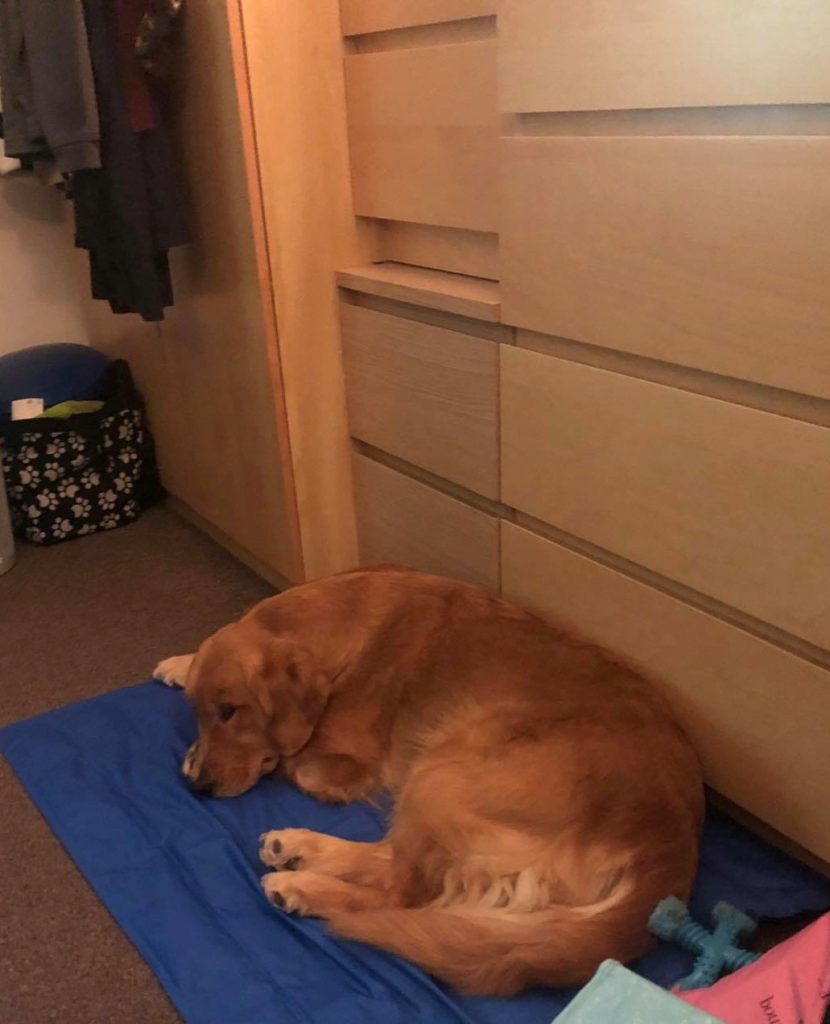
- Create, or make use of, a space that is your dog’s own area (whether that is a crate or a bed or a corner) and make it comfortable and a safe space for them, where they aren’t disturbed or interfered with (and that is NOT a punishment)
- Respect their boundaries – if they choose to go and spend time lying away from you, leave them be. I know it can be hard, especially if you don’t normally get to spend as much time with them, but many dogs need their space as much as they need their time with you
- If you have children, make sure to supervise them around your dog – if they are home from school more than usual, it is essential they are not crowding your dog or ignoring your dog’s signs that they are getting overwhelmed. Use this time to teach and make sure your children have manners around your dog.
- Make use of baby gates/stair gates/crates etc. if needed to ensure your canine and human members of your family stay safe – and make sure all family members respect these by shutting them accordingly
- Try to create and observe some form of routine, even if it is all very different to your usual daily routine – dogs thrive on routine so try to keep their mealtimes as usual, and create some semblance of normality within the home
- If you are feeling anxious amidst the panic and illness, and your dog is receptive to it, spend time sitting/lying with them and stroke them – it can be very soothing to interact with them
- If your dog seems to be experiencing particular anxiety or new behavioural traits that are concerning you, see if you can get support from trainers and behaviourists by phoning or emailing them etc. – your dog may be more vulnerable to picking up on anxiety, and/or struggle to deal with change and may need a little extra TLC
Hopefully there is something in here to help you if you’re concerned about how to keep things going with your dog in these difficult times. Get creative, get inventive and get bonding with your dogs!! Feel free to comment if you have any questions at all. Stay safe, try to stay well and try not to panic as that is never productive!
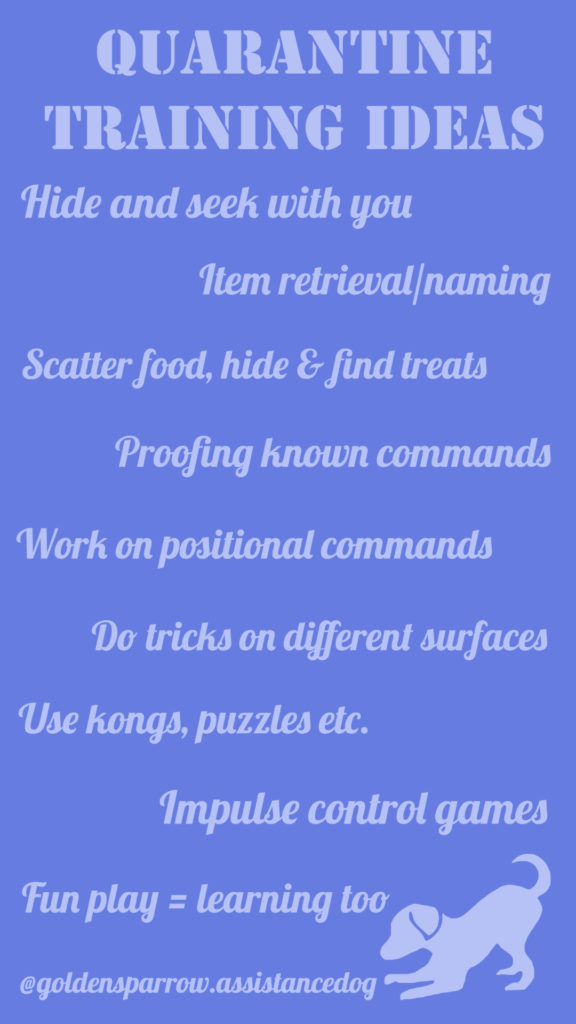
? This post is sponsored by Sparrow, carrying around her toys and bringing them to you to make you happier. The graphic above is taken from her Instagram and she approves of all of the ideas! ?


